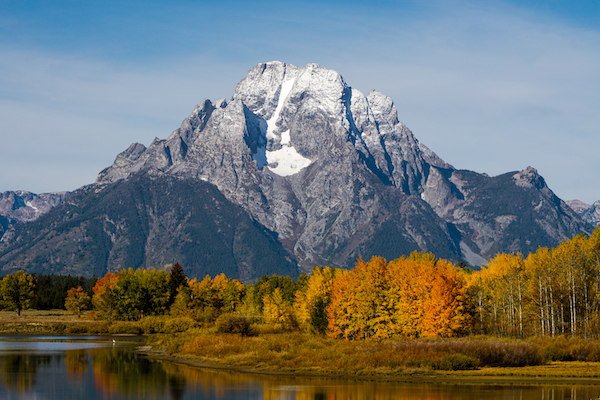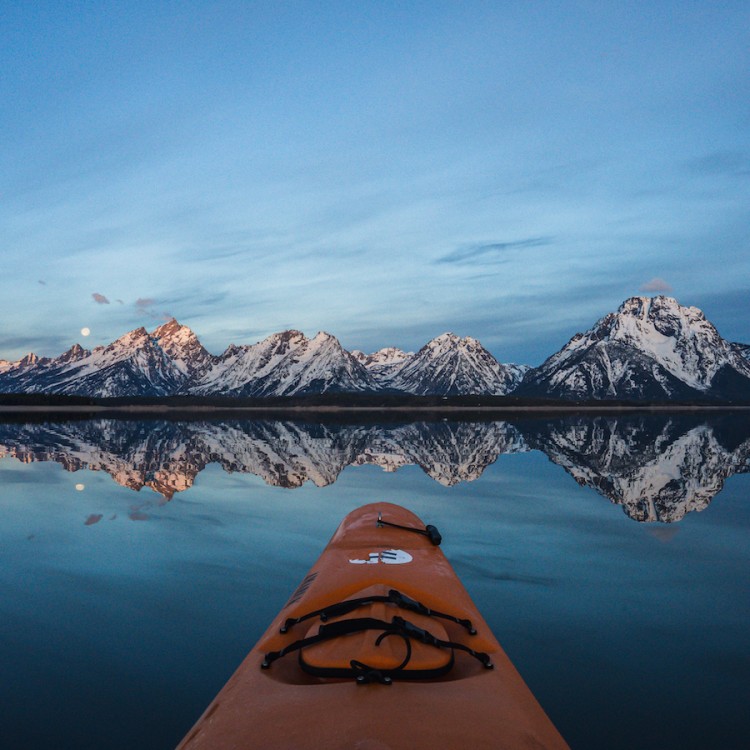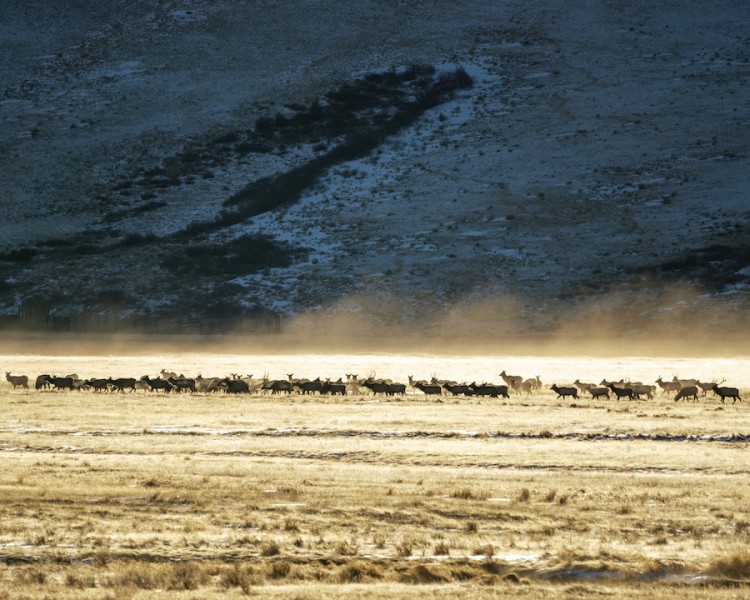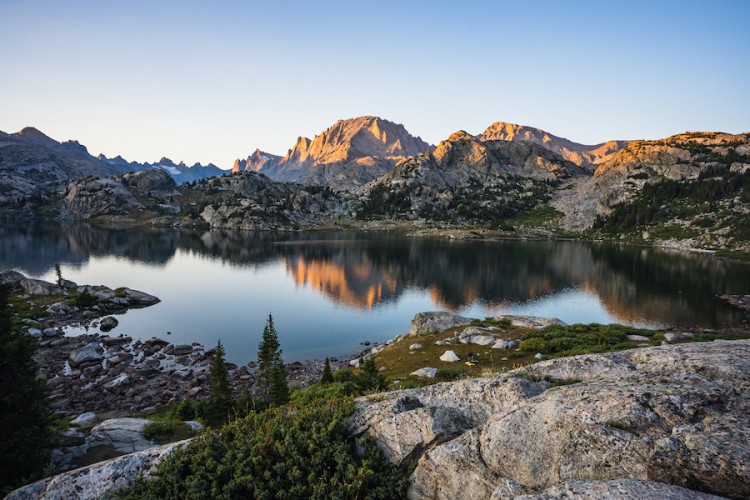Exploring America’s Public Lands: A Guide to the Diversity of Natural Treasures

The United States is blessed with an abundance of natural wonders, and much of this beauty is preserved and accessible through public lands. The federal government manages around 640 million acres, or 28% of all land in the country, as public lands. These lands, owned and managed by various government entities, offer a vast array of recreational opportunities, wildlife habitats, and cultural significance. From towering mountain ranges to vast deserts, from lush forests to pristine coastlines, America's public lands showcase the country's diverse landscapes and ecosystems. The Greater Yellowstone Ecosystem is home to numerous types of public lands, but few people actually understand the differences between the different types. Read on to learn about the United States’ public lands classifications.
1. National Parks:
National Parks are perhaps the most iconic and well-known type of public land in the United States. Managed by the National Park Service (Department of the Interior), these protected areas are designated for their natural beauty, unique geological features, and cultural significance. From the majestic Grand Canyon to the towering peaks of Yosemite, national parks offer visitors a chance to immerse themselves in some of the most awe-inspiring landscapes in the country. With opportunities for hiking, camping, wildlife viewing, and more, national parks attract millions of visitors each year. Jackson Hole is home to two national parks: Grand Teton and Yellowstone! In total, the U.S. has 63 designated National Parks spanning over 84 million acres. How many have you been to?

Grand Teton National Park at sunrise, taken on Jackson Lake. Photo by ETA Social Media Manager Kelsey Wellington.
2. National Forests:
Covering over 190 million acres across the country, National Forests are managed by the U.S. Forest Service (Department of Agriculture). Unlike national parks, which prioritize preservation, national forests are managed for multiple uses, including recreation, timber harvesting, grazing, and wildlife habitat conservation. Visitors to national forests can enjoy a wide range of activities, including hiking, camping, fishing, hunting, and off-road vehicle use. These expansive and diverse landscapes encompass everything from dense old-growth forests to high alpine meadows, providing endless opportunities for outdoor adventure. Here in Jackson Hole, we are surrounded by the Bridger-Teton National Forest and the Caribou-Targhee National Forest.
3. National Wildlife Refuges:
Managed by the U.S. Fish and Wildlife Service (Department of the Interior), National Wildlife Refuges are dedicated to the conservation and protection of wildlife and their habitats and encompass 95 million acres of land and 740 million acres of submerged lands and waters. These refuges provide vital breeding, nesting, and feeding grounds for a wide variety of species, including migratory birds, endangered mammals, and rare plants. Visitors to wildlife refuges can enjoy birdwatching, photography, hiking, and wildlife observation while learning about conservation efforts and the importance of preserving natural ecosystems. Our very own National Elk Refuge is one such place!

The National Elk Refuge. Photo by Kelsey Wellington.
4. Bureau of Land Management (BLM) Lands:
The Bureau of Land Management (Department of the Interior) manages over 245 million acres of public land, primarily in the western United States. BLM lands encompass a diverse range of landscapes, including deserts, mountains, forests, and grasslands. These lands are managed for multiple uses, including recreation, grazing, energy development, and conservation. Visitors to BLM lands can explore vast wilderness areas, discover ancient petroglyphs, camp in remote desert landscapes, and enjoy a wide range of outdoor activities.
5. National Monuments:
National Monuments are designated by presidential proclamation to protect unique natural, cultural, or historical sites. Managed by various federal agencies, including the National Park Service, U.S. Forest Service, and U.S. Fish and Wildlife Service, national monuments encompass a wide range of landscapes and features, totaling approximately 15 million acres of land. From ancient archaeological sites to towering volcanic craters, national monuments offer visitors a chance to explore and learn about America's diverse cultural and natural heritage. The U.S. has 130 National Monuments! How many have you been to?
6. Wilderness Areas:
Designated Wilderness Areas represent some of the most pristine and untouched landscapes in the United States. These areas, protected under the Wilderness Act of 1964, are managed by various federal agencies, including the National Park Service, U.S. Forest Service, U.S. Fish and Wildlife Service, and Bureau of Land Management. Wilderness areas are characterized by their natural beauty, rugged terrain, and absence of human development. They prioritize the preservation of natural ecosystems and processes, prohibiting human activities that could disturb the wilderness character. Visitors to Wilderness Areas can partake in primitive forms of recreation such as hiking and camping, immersing themselves in remote and rugged landscapes while experiencing a profound sense of solitude and connection with nature. Designated Wilderness Areas make up just under 112,000,000 acres of land in the United States. In Jackson Hole, we have the Gros Ventre Wilderness, the Bridger Wilderness, and the Teton Wilderness, and just over the pass in Idaho, we have the Jedediah-Smith Wilderness.

Deep in the backcountry of the Wind River Wilderness, WY. Photo by Kelsey Wellington.
In addition to the vast expanse of federal public lands, each state in the United States boasts its own collection of state-managed lands and parks, offering unique recreational opportunities and natural treasures to visitors and residents alike.
1. State Parks:
State parks are among the most accessible and popular destinations for outdoor recreation, offering a wide range of activities such as hiking, camping, swimming, fishing, and picnicking. Managed by state agencies, these parks showcase diverse landscapes, including forests, lakeshores, beaches, and historical sites. If you live in or near Wyoming, you’ve likely heard of Sinks Canyon State Park–a rock climbing mecca–or the well-known Hot Spring State Park–any guesses as to what’s here? State parks provide opportunities for outdoor adventure and relaxation close to home.
2. Local and Regional Parks:
In addition to state-managed lands, many cities and counties operate local and regional parks, providing green spaces and recreational amenities for urban and suburban communities. These parks offer opportunities for outdoor activities such as walking, jogging, cycling, and playgrounds for children, as well as hosting community events and festivals. Local parks play a crucial role in promoting public health, community engagement, and environmental stewardship, serving as cherished gathering places for residents of all ages.
America's public lands are a national treasure, providing opportunities for recreation, conservation, and education. Whether you're hiking through a national park, camping in a national forest, or birdwatching in a wildlife refuge, these protected areas offer endless opportunities for adventure and exploration. By understanding the different types of public lands and the agencies that manage them, visitors can make the most of their experiences while helping to ensure the long-term conservation and preservation of these precious landscapes for future generations to enjoy.
This is a basic overview of the various types of public lands in the United States, but sometimes it’s not this clean-cut. So much land in the West is steeped in conflict over ownership. Bears Ears National Monument in Utah, the Kelly Parcel here in Jackson Hole, and Wilderness Study Areas are examples of lands in conflict where different users have different ideas about how the land should be used. Disagreements between stakeholders can leave land in limbo for years, decades, and even centuries! We encourage you to learn more about this if it’s of interest to you.













